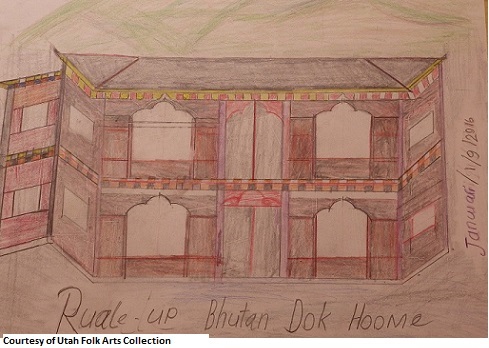Dublin Core
Title
Description
How would you feel if you were a refugee and had to flee your home and move to another country? Meet two Utahns who did just that.
Utah has long been a destination for immigrants motivated by the search for a better life. In the late 20th Century, however, one in ten newcomers to Utah was a refugee. The United Nations defines a refugee as someone fleeing his or her country because they are “afraid of persecution on account of race, religion, nationality, membership in a particular social group, or political opinion.” Since 1985, more than 50,000 refugees – most of them women and children – have resettled in Utah.
In the 1970s those seeking asylum came mostly from Southeast Asia. Utah resident Chey Mey*, for example, was a toddler in Cambodia when her family fled the growing violence of the Khmer Rouge. To avoid detection, they hid during the day and moved by night, traveling the small back roads of the Cambodian jungle. Some family members split off in order to move faster, but were later caught and killed. An estimated 3 million people met this same fate at the hands of the Khmer Rouge. During their escape, Mey’s family avoided capture and “walked past death many times over.” Eventually they reached Vietnam, only to be displaced again by war. Mey and her family, along with thousands of others, were finally granted refugee status and allowed to leave.
Every year the US government resettles up to 1,200 new refugees in Utah. In the 21st Century, they are likely to be from the Middle East, the former Yugoslavia, or the horn of Africa. Orphaned in the 1980s during the civil war in Sudan, Jacob Deng* was among 17,000 “Lost Boys” who walked 1,000 miles to a refugee camp in Ethiopia, and then to another in Kenya. He was finally resettled in Salt Lake City in 2001 and says that enduring hope kept him alive throughout his journey.
Mey and Jacob are among the thousands of refugees who have overcome unimaginable circumstances to courageously build new lives in Utah.
Creator
Megan van Frank for Utah Humanities © 2015
Source
Image: Ruale-up Bhutan Dok Hoome (Our Home in Bhutan), January 1, 2016. Drawing by Sara Suiti Sunuwar, a Bhutanese immigrant living in Utah. She says of her home "In Bhutan we had a big, beautiful house that my husband Kita built. He is a good carpenter, but can't do that here because things are built differently here. It is good here. I miss Bhutan, but Utah is good." Image courtesy of the Utah Folk Arts Collection.
_______________
See catalog for Nation of Immigrants exhibition curated by Namon Bills in conjunction with the Smithsonian Journey Stories tour of Utah, Utah Cultural Celebration Center, West Valley, Utah, September 13 to October 24, 2014; Joyce A. Kelen and Leslie G. Kelen, eds., Faces and Voices of Refugee Youth, (Salt Lake City: Center for Documentary Arts, 2002), as well as associated curriculum guides for K-6 and secondary school teachers; Utah’s Refugee Voices, an audio project of the Your Story program at the University of Utah College of Humanities; Gregory E. Smoak, Utah’s Journey Stories, Salt Lake City: Utah Humanities Council, 2014; and for more information about refugees in Utah, see the Utah Refugee Center. * Note that names have been changed to protect privacy.
Publisher
The Beehive Archive is a production of Utah Humanities. Find sources and the whole collection of past episodes at www.utahhumanities.org
Date
2015-01-23

